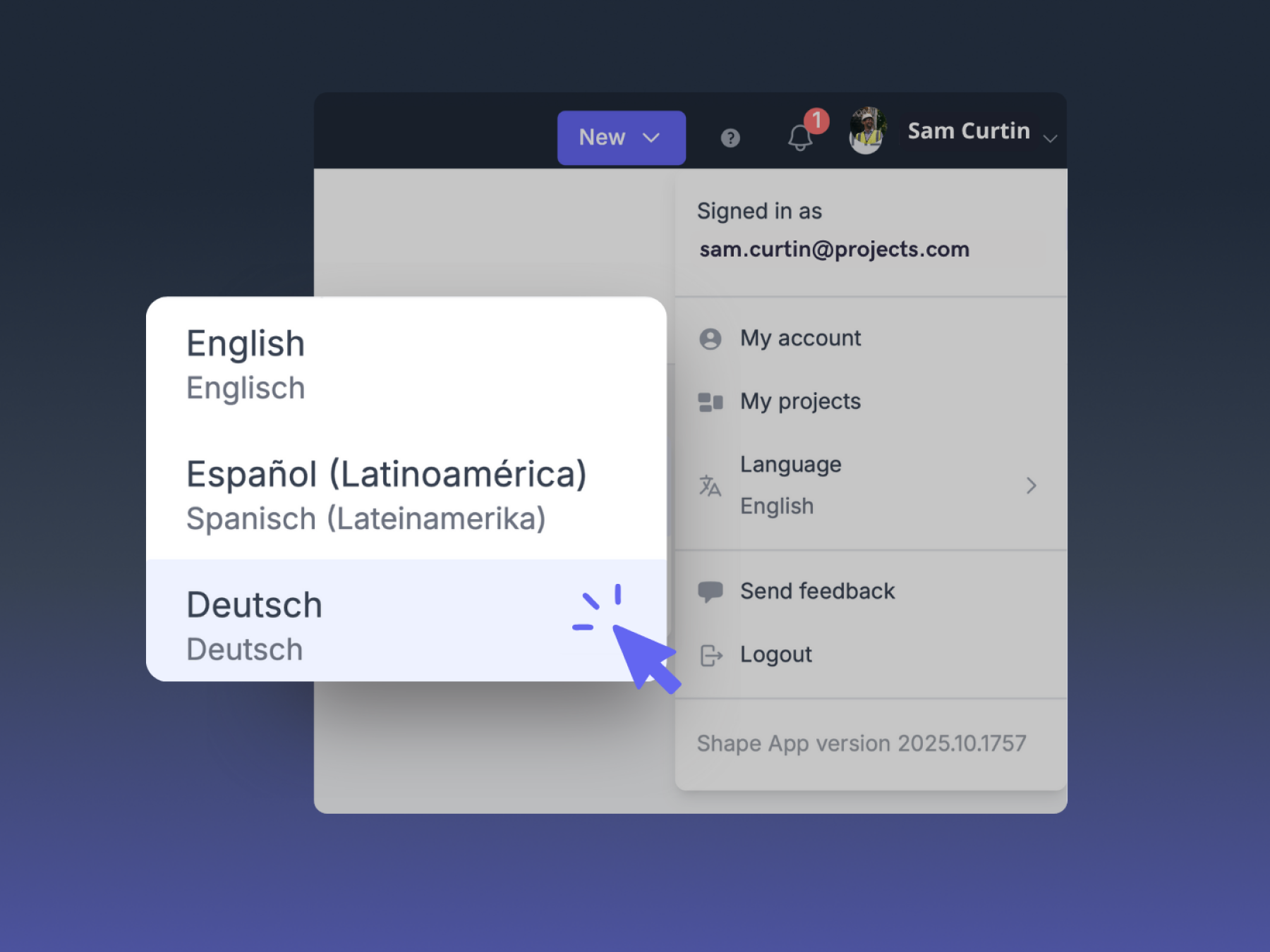Every contractor has been there: you invest in the best construction management software to make sense of your project, but the dashboards fail to tell the story of what’s really going on in the field.
The system is powerful in theory, but in practice, your construction management software is only as powerful as the data being fed into it. This isn't a technical glitch; it's a human one. The truth is, most of these platforms are too complex for the people who actually need to use them to collect the data and feed the construction management software - those are the teams in the field.
This article explores how field-first tools benefit construction management software, the difference between them, what is a construction site management software, what makes site teams adopt and actually use the digital tools that feeds the construction management software, and how leading contractors use this approach to improve record-keeping, strengthen visibility, and make the site-to-office connection effortless.
When site teams are stuck with clunky, resource-heavy tools, they do what's easiest: they revert to emails, WhatsApp messages, and scattered photos. The result is a total disconnect. Your commercial team is left fighting disputes with weak evidence, chasing records that don't exist. You're losing profit on every project to unmanaged change because the evidence you need to substantiate a claim never makes it into your construction management software.
The Field Tool vs. The Management Software
Field tools are part of what enables the success of construction site management software - but field tools are very different from a full construction management software.
- Field tools are designed for data entry. They are made for the people on site to use quickly and easily. Their job is to get good, structured information in and create a reliable audit trail.
- Full construction management software is for managing that data. It takes the information from the field and turns it into reports, dashboards, and financial insights for the back office. It's for analysis, not for day-to-day use on-site.
The problem is that a construction management system is only as good as the data being fed into it. Without simple, powerful field tools, your expensive construction management software is just a fragmented database. Modern contractors have realised that construction management software only works as well as the field tools feeding it.
That's why the most effective project teams now rely on field-first construction tools built to capture real-time progress, evidence, and change to keep their construction management software current and reliable. The tools that make the biggest difference have a few key traits:
- It's built for the field: Field teams only use the tools that are intuitive and convenient to them. Those tools must be fast, easy to use on a phone, and designed for how people actually work on-site - no long setup or training cycles needed.
- It works everywhere: A mobile-first design with offline syncing means teams can capture issues and progress anywhere, even in dead zones.
- It captures everything as it happens: When the field teams adopt their tools, every issue, delay, and progress update gets recorded the second it happens.
- It feeds structured data into your construction management software: Data from the field flows directly into platforms like Procore or Autodesk Construction Cloud. This keeps the whole team connected and ensures your systems actually work as intended.
- It creates a single source of truth: All photos, messages, and daily reports link back to specific activities, creating a bulletproof, searchable record you can use to defend claims.
This is where Shape Construction sits apart. It acts as the field delivery layer beneath your existing construction management software, capturing daily reports, issues, and weekly plans in real time and feeding that structured data straight into your existing systems. When every change, record, and photo is logged and automatically stored, no piece of evidence is ever missed. By connecting the site to the software, contractors get what every management platform promises: accurate information, faster decisions, and complete commercial protection.
How Modern Contractors Apply These Lessons
Leading contractors are increasingly using Shape Construction as the field-level layer that connects daily and weekly delivery to commercial oversight. It complements construction management software by optimizing the process that matters most to site teams.
In day-to-day practice, they use Shape to:
- Record progress and labor: Use Shift Manager to log daily work in minutes and automatically produce professional reports.
- Manage issues and blockers: Use Issue Tracker to see problems in real time and hold people accountable for fixing them.
- Plan weekly work: Use Weekly Work Planner to turn your schedule into clear work plans for everyone on site to follow.
- Communicate clearly: Use Channels to centralize all project communication, so you get an auditable record of every conversation.
- Monitor record quality: Use the Data Book to spot gaps in documentation and track compliance across your projects.
Because it's designed for the field first, Shape achieves adoption rates that typical construction management software rarely match. Crews can start in under an hour, commercial teams get defensible data, and leadership gains visibility across every project.
Wrap Up
The real differentiator in construction tech is balancing simplicity with structured data, accountability, and scale. An effective tech stack requires two parts: a simple field tool to capture data and a powerful construction management software to analyse it.
When it comes to the best construction software, Shape Construction is a great choice of field tools to feed your construction management software. It's a platform that captures daily delivery with ease, links field work to schedules, and provides strong, defensible records when it matters most, all without burdening the people doing the work.
👉 Speak to an Advisor to see how Shape supports your projects.
Frequently Asked Questions
The best solutions combine powerful back-office platforms with simple, field-first tools. Platforms like Shape Construction provide a purpose-built, starting point designed for field adoption and commercial protection, for contractors and subcontractors.
It replaces scattered communication and manual reporting with structured, searchable records that protect both delivery and commercial outcomes. Subcontractors using Shape can submit progress reports, raise issues, and collaborate with main contractors through structured channels, all while preserving autonomy and accountability.
Yes. Shape complements systems like Autodesk Build and Procore, connecting field data to management reporting for a complete picture.
Most teams can begin within an hour, without formal training or IT setup. All paid plans are assigned with a dedicated Customer Success Manager to ensure quick and seemly integration and adoption.
Construction site management software is a specialised digital tool that helps project teams plan, coordinate, and record what happens on site each day. It allows site engineers, supervisors, and subcontractors to log progress, track issues, share photos, and document changes as they happen. The best site management tools - like Shape Construction - are designed for the field first, ensuring that accurate, real-time data flows directly into broader construction management systems for analysis, reporting, and commercial protection.
Traditional construction management software like Procore or Autodesk Construction Cloud is built for formal processes and admin, such as budgets and compliance. They sit at the top of the tech stack for reporting and oversight. Shape is different because it's field-first. It’s built specifically for people on-site to use every day, so it's simple and intuitive. This approach ensures that you get high-quality, real-time data from the field, which then makes your bigger management platforms more valuable.
Shape is designed to work with your existing tools, not replace them. It fills the gap that larger platforms often leave open: getting accurate, real-time data from the field without a lot of administrative work. Many of our customers use Shape to manage daily on-site execution and then feed that high-quality data into their other systems for financial tracking, compliance, and formal reporting.
Shape works alongside existing platforms by providing the "field-first layer" they often lack. It captures what is happening on-site, including issues, downtime, and progress, and builds a detailed, timestamped record. This information can then be used to improve the accuracy of reports and insights in your other systems. The goal is to provide a seamless workflow where teams can use a simple tool in the field that feeds valuable data into the more complex, office-based software.
Most large construction management software is designed with office workflows and reporting in mind, making them too complex and admin-heavy for site teams. This often leads to low adoption. Shape's tools are simple and feel familiar, like popular messaging apps, so field crews can get started right away without a lot of training. The entire platform is built to minimize administrative tasks, which is why site teams actually use it consistently.

.png)







.png)

%201.png)


